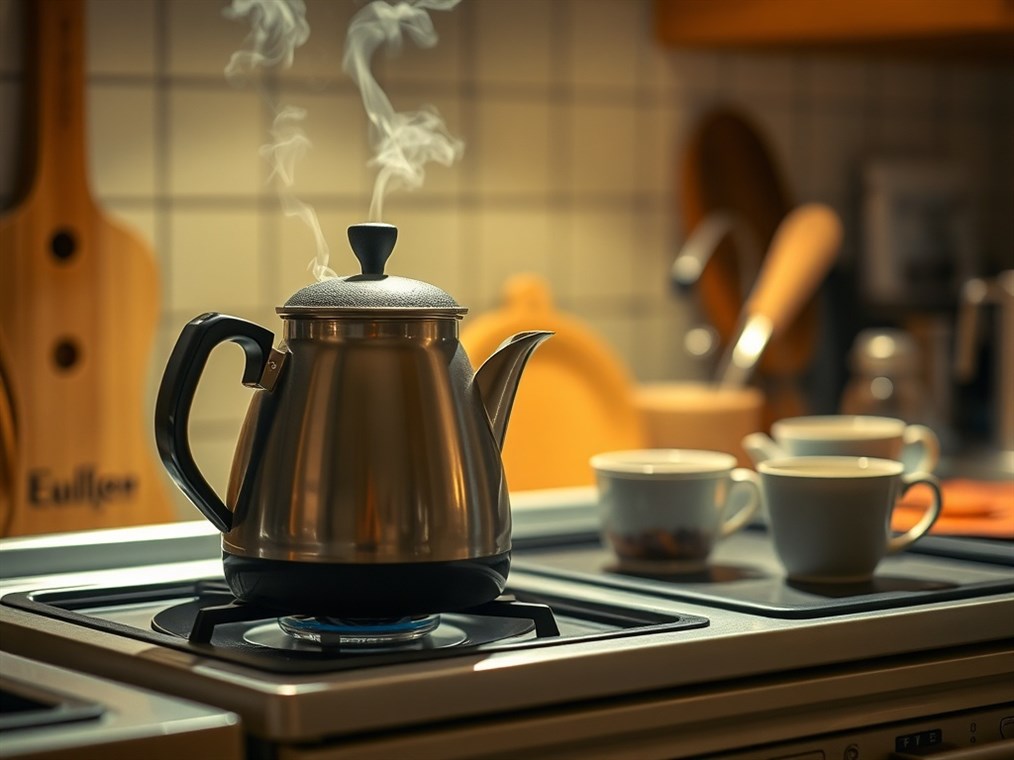Why Isn’t My Kettle Whistling? Let’s Get to the Bottom of This!
That high-pitched whistle – it’s the Pavlovian bell for tea time, isn’t it? Or coffee, or hot cocoa… whatever warms your soul. But what happens when your kettle goes silent? It’s like a band suddenly missing its lead singer – something’s just off. Don’t worry, though. A quiet kettle isn’t necessarily destined for the scrap heap. Let’s figure out why it’s gone mute and what you can do about it.
The Whistle: More Than Just Hot Air (Well, Actually…)
Ever wonder how that whistle works? It’s not just random noise. It’s actually kinda clever. Think of it like this: the steam, desperate to escape, hits the whistle mechanism. According to some seriously smart folks at Cambridge, it’s a two-part harmony of sorts. First, there’s this thing called “Helmholtz Resonance,” where the steam vibrates against the air in the whistle, kinda like blowing across a bottle top. Then, as the steam gets hotter and more forceful, it creates turbulence, like a tiny tornado, which cranks up the volume. The shape of the whistle, the steam pressure – all that jazz contributes to the final tune. Pretty neat, huh?
So, Why the Silence? Let’s Play Detective
Okay, enough science. Let’s get practical. Why isn’t your kettle whistling? Here are the usual suspects:
1. Limescale: The Silent Killer
Hard water areas, I’m looking at you! Limescale, that chalky stuff that builds up inside your kettle, is a notorious whistle-silencer. It clogs everything up, especially that delicate whistle mechanism.
- The Fix: Descaling is your new best friend. Grab some white vinegar (the cheap stuff works great!) and mix it with water, equal parts. Simmer it in the kettle for about 15-20 minutes. Rinse thoroughly afterwards, unless you fancy vinegar-flavored tea. Stubborn limescale? Let it soak longer. Trust me, elbow grease and a good soak work wonders.
2. Spout Blockage: Debris in Distress
Bits of tea, rogue leaves, mineral deposits – anything can get stuck in the spout or whistle.
- The Fix: Time for some exploratory surgery! First, give it a good look. See anything obvious blocking the way? Grab a thin wire or even a needle and gently poke around to dislodge any gunk. Then, try running water forcefully through the spout to flush out any loose bits. If you can take the whistle apart, even better! Soak it in vinegar to dissolve any stubborn deposits.
3. Loose Lid: Steam Escaping the Scene
A wobbly lid is like a leaky tire. Steam escapes where it shouldn’t, and you lose the pressure needed for that glorious whistle.
- The Fix: Make sure that lid is on tight! If it’s damaged or warped, you might need to replace it. A well-fitting lid is crucial.
4. Low Water Level: Not Enough Oomph
Not enough water, not enough steam. Simple as that.
- The Fix: Fill ‘er up! Just don’t go past the maximum line, okay?
5. Whistle Damage: A Sad State of Affairs
Sometimes, the whistle itself is the problem. Cracks, breaks – they all spell trouble.
- The Fix: Inspect the whistle closely. See any damage? You might be able to find replacement parts, but honestly, it can be a pain. If it’s badly damaged, a new kettle might be the easier option.
6. Electric Kettle Gremlins: When Things Get Technical
Electric kettles can have their own quirks. A dodgy heating element or thermostat can stop the water from reaching a proper boil.
- The Fix: If your kettle’s taking forever to boil, the heating element might be on its way out. If it’s not shutting off automatically, the thermostat’s probably gone haywire. Electric kettle repairs can be tricky, so you might need to call in a pro.
7. The Non-Whistler: A Case of Mistaken Identity
Okay, this might sound obvious, but… is your kettle supposed to whistle? Some kettles just aren’t designed that way.
- The Fix: If it’s never whistled, it’s probably not a whistling kettle. Check the packaging or the manufacturer’s website.
Kettle TLC: Keeping Your Kettle Happy
A little love goes a long way. Here’s how to keep your kettle whistling (or, you know, just working properly) for longer:
- Descale Regularly: Don’t let limescale take over! How often depends on your water, but once a month is a good rule of thumb.
- Empty After Use: Don’t leave water sitting in there. It encourages limescale buildup.
- Clean the Spout: Keep that spout clear!
- Be Gentle: Don’t drop it! Kettles aren’t indestructible.
Kettle Choices: A Quick Look
- Stovetop Kettles: The classics. They look great on the stove.
- Electric Kettles: Super convenient. Some even let you choose the water temperature.
- Gooseneck Kettles: For the coffee aficionados. That special spout gives you amazing pouring control.
So, there you have it! With a little detective work and some basic maintenance, you can usually get your kettle back to its whistling best. Now, if you’ll excuse me, I hear my kettle calling… time for a cuppa!

